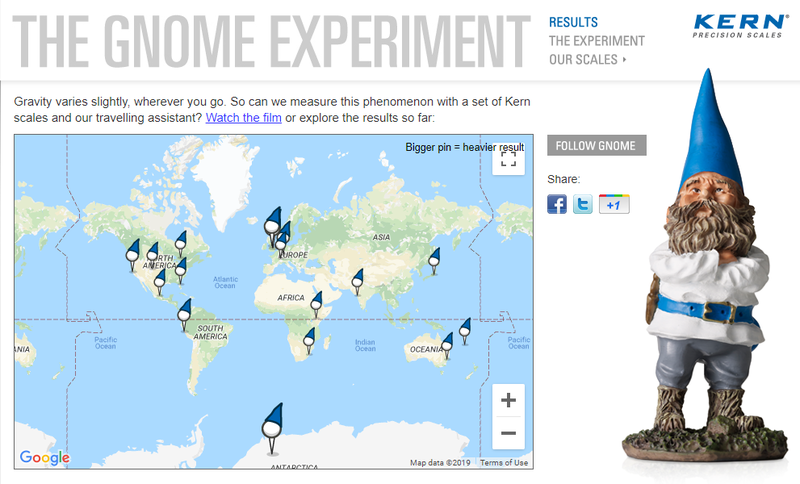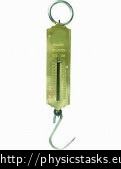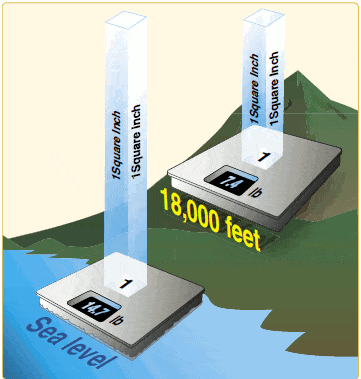Scale Experiments
Work in Progress
According to the University of Illinois:
“ Together, the centrifugal effect and the center of mass distance reduce g by about 0.53% at the equator compared to the poles. ”
Kern Gnome Experiment
The precision scale manufacturer Kern conducted a public test of the variation of weight by latitude, showing that weight changed when a ceramic gnome and one of its precision scale were sent to members of the public at different latitudes:
Website: http://gnome-experiment.com/
Scale Not Calibrated
The scale was calibrated in Germany and sent to different areas:
https://www.chemistryworld.com/news/gnomadic-experiment/4924.article
“ Kern the gnome and a Kern and Sohn balance, calibrated at the firm’s laboratory in Balingen, Germany, are travelling around the world to anyone who requests a visit in a specially designed flight case. Gloves and cleaning implements also come along for the ride, so the mass of the gnome isn’t altered by dirt or over enthusiastic cleaning.
Several factors affect the gravitational field at different locations on the Earth, for example the closer Kern gets to the equator, the less he should weigh because the velocity of the Earth’s spin at the equator (1670km/hr) counteracts the force of gravity by up to 0.3%. This weight loss will also be increased by the equatorial bulge that means Kern would be further from the centre of our planet and gravity is proportional to the inverse square of the distance between two objects. ”
“ Kern travels in a reinforced case containing himself and a Kern EWB 2.4 Scale calibrated according to local gravity in Balingen, Germany, to ensure any weight change he encounters on his travels shows up. ”
Uncontrolled Experiment
Members of the public were instructed to place the gnome onto the scale and to report their results:
Spring Scale
http://physicstasks.eu/930/spring-scale-on-the-pole-and-on-the-equator
“ We calibrated a spring scale on the North Pole and then we moved the scale to the Equator.
Does the spring scale give the same readings as on the pole? Give reasons. ”
This is a different experiment than weighing a mass in two different areas with scales that have been calibrated for their local areas.
Different areas have different air pressures and therefore different weights to their atmosphere. They took a scale calibrated for an area of higher pressure to an area of lower pressure and are measuring the difference seen on that scale.
Practical calculations for engineers
“ Suppose such a spring balance be made and calibrated in London by suspended weights which are mutiples or sub-multiples of the point weight. Then if the balance and the standard pound weights were taken to different latitudes, it would be found that the balance would show increasing readings for the same weight in passing from the equator to the poles. ”
“ World Distribution of Sea Level Pressure
The atmosphere exerts a pressure of 1034 gm per square cm at sea level. This amount of pressure is exerted by the atmosphere at sea level on all animals, plants, rocks, etc.
Near the equator the sea level pressure is low and the area is known as equatorial low. Along 30° N and 30° S are found the high-pressure areas known as the subtropical highs. Further pole wards along 60° N and 60° S, the low-pressure belts are termed as the sub polar lows. Near the poles the pressure is high and it is known as the polar high. ”
and further down:
“ Polar High Pressure Belt
- The polar highs are small in area and extend around the poles. - They lie around poles between 80 – 90° N and S latitudes.
Formation
- The air from sub-polar low pressure belts after saturation becomes dry. This dry air becomes cold while moving towards poles through upper troposphere. - The cold air (heavy) on reaching poles subsides creating a high pressure belt at the surface of earth. ”
Scales Affected by Air Pressure
https://www.arlynscales.com/scale-knowledge/factors-can-affect-scales-accuracy/
“ Factors That Can Affect Your Scale’s Accuracy
...
Differences in air pressure – Scales can provide inaccurate measurements if the air pressure from the calibration environment is different than the operating environment. ”
Barometer
A scale that measures the weight of the atmosphere is called the "barometer".
Air pressure does not affect the scale trivially. See the following illustration and text:
https://www.artofmanliness.com/articles/fair-or-foul-how-to-use-a-barometer/
“ Air pressure decreases as altitude increases.
Atmospheric pressure — or barometric pressure — is simply the weight of the air at ground level. It’s a little easier to understand when you think about the concept of water pressure first. As you get deeper in water, the pressure increases. This is because as you descend, the built up weight of the water on top of you increases. In 1 foot of water, you have the weight of that foot of water pressing down on you. In 2 feet of water, you have the weight of an extra foot of water pressing on you. It’s quite logical, really. ”
Q. Sure, but are we talking about being at 18,000' versus sea level or at a pole versus the equator?
A. The difference between those two locations isn't necessarily as radical. The point is that farcical promotional stunts are being presented as fact, without control for other variables.
Worldwide Air Pressure Gradient
World Distribution of Sea Level Pressure
“ The atmosphere exerts a pressure of 1034 gm per square cm at sea level. This amount of pressure is exerted by the atmosphere at sea level on all animals, plants, rocks, etc.
Near the equator the sea level pressure is low and the area is known as equatorial low. Along 30° N and 30° S are found the high-pressure areas known as the subtropical highs. Further pole wards along 60° N and 60° S, the low-pressure belts are termed as the sub polar lows. Near the poles the pressure is high and it is known as the polar high. ”
and further down:
“ Polar High Pressure Belt
- The polar highs are small in area and extend around the poles. - They lie around poles between 80 – 90° N and S latitudes.
Formation
- The air from sub-polar low pressure belts after saturation becomes dry. This dry air becomes cold while moving towards poles through upper troposphere. - The cold air (heavy) on reaching poles subsides creating a high pressure belt at the surface of earth. ”
https://en.wikipedia.org/wiki/Polar_High
“ Polar High
The polar highs are areas of high atmospheric pressure around the north and south poles; the north polar high being the stronger one because land gains and loses heat more effectively than sea. The cold temperatures in the polar regions cause air to descend to create the high pressure (a process called subsidence), just as the warm temperatures around the equator cause air to rise to create the low pressure intertropical convergence zone. ”
Different areas have different air pressures and therefore different weights to their atmosphere. They took a scale calibrated for an area of higher pressure to an area of lower pressure and are measuring the difference seen on that scale.
Difference of Wight in Air Pressure
Dr. Fred Dunnebier at the University of Hawaii explains that the difference in weight is related to the buoyancy of an object in relation to its environment.
“ Q. Would a person weigh more in a denser atmosphere than in a less dense atmosphere? Does the pressure exerted by a column of air cause changes in a person's weight?
A. Actually, a person would weigh less in a denser atmosphere. "Weight" is how much you push down on a scale - which is different from "mass" which is how much matter you contain (which wouldn't change). The formula is: weight= mass*(gravitational acceleration). The pressure exerted by a column of air is the same in all directions, so a heavy atmosphere does not have weight since it pushes just as much up as it does down. What makes your weight be less in a heavy atmosphere is the buoyancy effect - your volume is taking up space that would normally be taken by the heavy air, and the mass of the displaced air is subtracted from your mass when calculating weight: your weight=(your mass-displaced air mass)*(acceleration of gravity). Note that if the mass of displaced air is equal to your mass, you will weigh nothing (neutral buoyancy), and if you weigh less than the displaced air (as you do in water) you will float.
Dr. Fred Duennebier, Professor
Department of Geology and Geophysics
University of Hawaii, Honolulu, HI 96822 ”
If the mass of the object is equal to the air it displaced it is neither pushed upwards or downwards, if the mass of the object is less than the air it displaces, it is pushed upwards/lighter and if the mass of the object is more than the air it displaces it is pushed downwards/heavier.
Q. So things will be (slightly) lighter at the poles, if it were only down to atmospheric pressure. But they are heavier. Why?
A. An object is only lighter at the poles if it's an object that is of low density, and lighter than the air it displaces. If the object is of high density, heavier than the air it displaces, the opposite effect will occur. If the object is at equal density to the air it displaces it will be neither lighter or heavier. From the experiments in question, they are often measuring metallic weights on scales.




